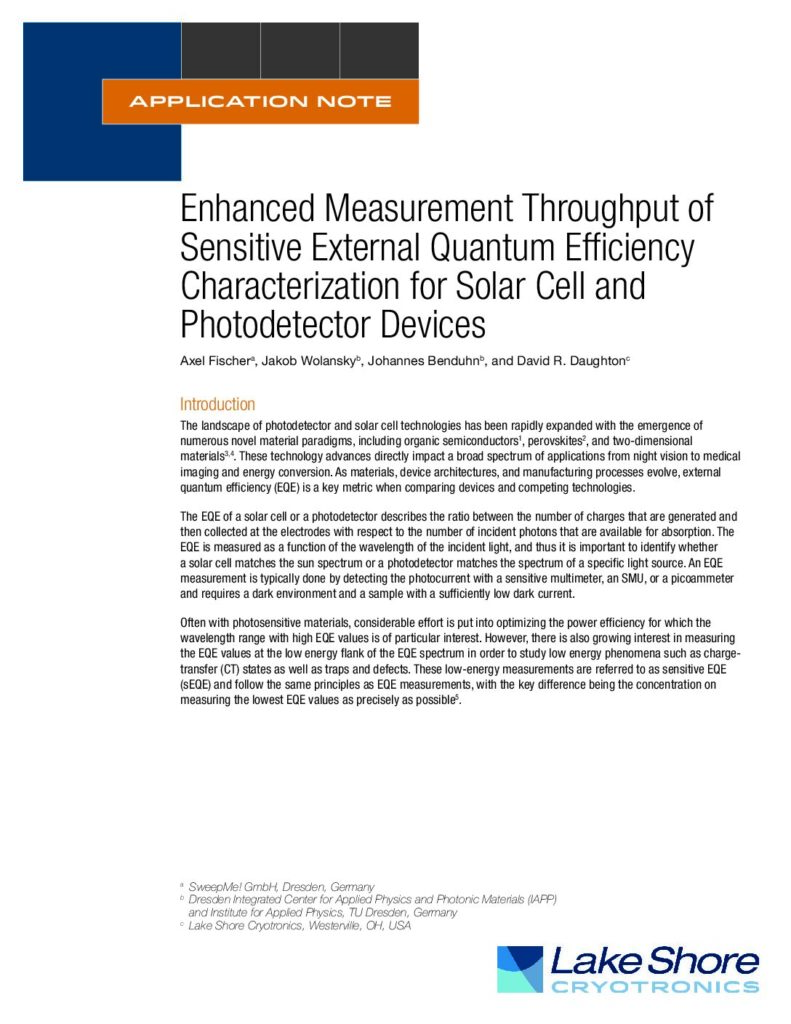
Register now free-of-charge to explore this white paper
This application note discusses the role of sEQE measurements in characterizing and understanding performance issues in organic solar cells (OSCs). OSCs often suffer from potential losses due to the recombination of generated charges; these recombination mechanisms can be better understood by studying a wide energy landscape. OSCs blend donor and acceptor materials, both of which can absorb light and lead to the creation of strongly bound electron-hole pairs (Frenkel excitons). Due to the high exciton binding energy in the constituent materials, the excitons diffuse through the material. When an exciton reaches an interface between the donor and the acceptor material, it can dissociate with one constituent charge transitioning to the neighboring molecule while the remaining constituent stays on the original molecules. Charges that are separated at the donor-acceptor interface are not immediately free but are rather bound at the interface in so-called CT states. In high-efficiency OSCs, these bound charges are selectively transported to their corresponding collection electrode; however, in many lower-efficiency OSCs, the charges are stuck at the interface until they recombine often through a non-radiative channel. These recombination processes must be prevented in order to achieve optimal efficiencies in OSCs. Therefore, it is important to investigate those CT states. Sensitive EQE spectroscopy helps unveil the energy and distribution of CT states and leads to material and processing improvements that diminish internal voltage losses in these devices.

Physics Today and Wiley are proud to bring you this white paper, sponsored by Lake Shore.
Partnered with
Physics Today, the flagship publication of the American Institute of Physics, is the most influential and closely followed physics magazine in the world. Physics Today‘s mission is to be a unifying influence on the physical sciences by cultivating a shared understanding, appreciation, and sense of belonging among physical scientists.

